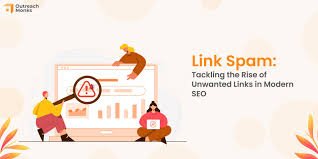Table of Contents
- Link spam: What is it?
- Why Link Spam is a Problem
- How to Identify Link Spam
- Best Practices for Preventing Link Spam
- Tools to Help Detect Link Spam
- Case Study of Link Spam Prevention
- The Future of Link Management
- Final Thoughts
Link spam: What is it?
The act of building backlinks purely for the aim of influencing search engine results is known as “link spam.”These low-quality, often automated links are engineered to improve a website’s organic search ranking artificially. This underhanded technique can significantly harm your website’s reputation and lead to long-lasting negative impacts. It’s important to note that spam links can come from sources such as irrelevant blogs, comments, and forums, often with sinister intentions. Recognizing and dealing with these spam links is crucial for maintaining the health of your site’s backlink profile.
Spam links are typically created by unscrupulous SEO practitioners using black hat techniques to boost search engine rankings quickly. This method may provide short-term gains but ultimately leads to lasting harm. Various forms of link spam include comment spam, forum spam, link farms, and automated link generation. Each technique artificially aims to inflate a site’s importance in search engine algorithms, but search engines have become savvy in identifying and penalizing these manipulative techniques.
Why Link Spam is a Problem
Link spam is a significant issue for digital marketers, as it can lead to severe penalties from search engines, reducing a site’s visibility and reputation. Recovering from these fines can be expensive and time-consuming. Additionally, spam links can degrade user experience, as users may encounter irrelevant or low-quality content, affecting their trust in the website. Revenue loss and missed opportunities may result from it. Maintaining a credible online presence in the competitive digital landscape is crucial, as it can result in losing competitiveness and market share.
How to Identify Link Spam
Link spam can be detected through vigilance and analytical tools. It is often triggered by sudden spikes in backlinks from low-quality websites, usually generated through automated programs. Anchor text that doesn’t align with the content is another indicator. Tools like Google Search Console help website owners monitor their backlink profiles effectively, providing detailed insights into backlink sources and highlighting suspicious activities. Proactive monitoring can help identify and rectify issues, preventing long-term damage.
Best Practices for Preventing Link Spam
Regularly audit your backlink profile to detect spammy links and assess the health of your site’s network. Avoid purchasing backlinks, as it can lead to low-quality links. Prioritize organic link building techniques and follow moral guidelines by producing excellent content that draws backlinks from reliable sources. Utilize Google Search Console’s disavow function to instruct search engines to disregard dubious backlinks. Maintaining a solid backlink profile is essential to being well-regarded by search engines. Ethical link-building involves creating valuable content and seeking collaborations with reputable sites.
Tools to Help Detect Link Spam
Sophisticated tools like Moz’s Link Explorer, Ahrefs, and SEMrush offer comprehensive backlink analytics and spam detection features. These tools provide thorough data on the backlinks pointing to your website, domain authority, spam score, and relevancy analysis. Ahrefs’ backlink checker alerts you to new backlinks, while Moz’s Link Explorer provides a spam score for every backlink, helping identify risky links that could harm your site’s SEO. These tools are essential for regular audits and maintaining a clean backlink profile.
Case Study of Link Spam Prevention
A mid-sized e-commerce site experienced a significant drop in traffic due to accumulated spammy backlinks. After a thorough audit, the site recovered its ranking and traffic over a few months. This case highlights the importance of diligent link management and proactive measures in combating link spam. A content marketing platform also experienced a sudden influx of unrelated backlinks and promptly disavowed them using comprehensive backlinks auditing tools. Regular monitoring and timely action are crucial for maintaining a healthy backlink profile.
The Future of Link Management
As search engines evolve, so do link management strategies. Future algorithms will be more efficient in identifying and penalizing link spam. Digital marketers must stay updated to adapt their link-building strategy. Search engines now prioritize high-quality, contextually relevant backlinks. Link-building techniques must be updated to ensure long-term SEO performance and maintain a clean backlink profile.
Final Thoughts
Link spam is a significant issue that can negatively impact a website’s search engine ranking and reputation. To prevent this, it’s essential to regularly audit your backlink profile, use appropriate tools, and follow best practices. Prioritizing ethical link-building and monitoring backlink health can ensure your website’s standing and sustained digital success.



